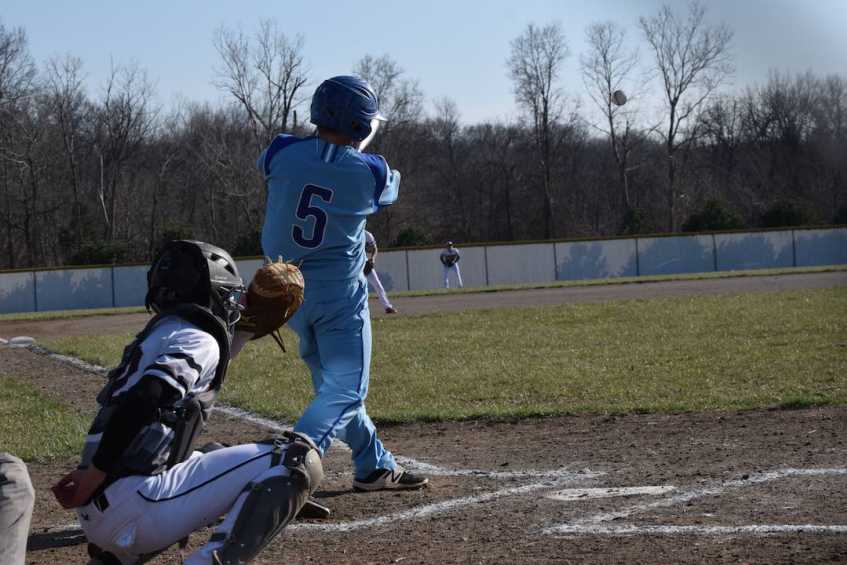
Coaching the baseball strike zone to youth baseball players is a continual process and a complicated one. I say complicated for a couple of reasons. First, many beginners have little understanding of the game of baseball, mainly because today's kids do not watch the game much as they did years ago. They must learn what constitutes a strike, a ball and the overall strike zone. Secondly, just telling a ballplayer what the strike zone parameters are, do not make it easy to follow and automatically pick up.
It is a continual process because just as hitting success, knowledge of the baseball strike zone comes and goes over the course of the season. Players may be seeing the ball flight well one game, and that suddenly disappears the next outing. That is the nature of one of the most challenging skills in all of athletic competitions. Coaching the strike zone is also delicate because coaches should not want to take the aggressiveness away from young hitters, which sometimes happens when scolded for swinging at out of the zone pitches. As players move up the baseball ladder, pitch selection also plays a huge role in a batter's success, even when pitch recognition is astute by the player.
Keys to Coaching the Baseball Strike Zone
The development of a "Good eye" when batting begins with the following.Coaches should:
1 - Continually coach the hitting mechanics the better the hitting mechanics and the more compact the swing, the longer a hitter can wait for the ball, which is crucial for knowing whether a pitch is in the strike zone or not. If the hitter has a long swing, they will have to decide on whether to swing sooner than a hitter with a more compact swing. Over time hitters will learn how long it takes them to get the bat out front. To reiterate, the longer this action is, the sooner the hitter has to decide to swing. So the best way to avoid swinging at bad pitches would be to shorten the swing, and this will allow the hitter to wait longer on the ball. The ability to delay until the last second is especially helpful with learning to hit the curve and other off-speed If the hitter cannot wait long enough, he will continually get fooled on these pitches and chase them out of the strike zone.
2 - Make sure players are the correct and same distance from home plate - during games, batting practice, and batting tee work standing the same distance from the plate is essential. Noticing slight changes in distance from home plate is often overlooked, but it is critical that coaches watch for players standing a different distance from home in games than in batting practice. Just a couple of inches difference can change a player's perception and affect their judgment.
3 - Do not allow players to expand the strike zone in batting practice many young players think they are supposed to swing at every pitch in batting practice or get loose with the strike zone. It is vital to continually tell the hitters during batting practice to only swing at strikes even if the pitcher cannot seem to throw any strikes. If a hitter swings at a pitch in practice that is not a strike, point that out to him. Along the same line, if the batter takes a ball that is a strike, then ask him where they thought the location Tell him it is okay not to have offered at it, but that it was a strike. This approach over time will usually pay off for the hitter with good discipline eventually resulting.
4 - Teach players to watch balls they do not swing at all the way to the catcher's glove often, balls taken are strikes, or closer to strikes, than thought, when they did not swing. Seeing a pitch's final destination when not swinging is another of those neglected practices that pays off with a better eye. I ask players to see where the ball crosses home plate and where it may hit the catcher's glove or backstop, so they know where the ball finished. Little is more important for developing a good hitter than tracking the pitched ball from the pitcher's hand all the way across home plate or to bat contact.
5 - Teach an aggressive but patient approach. Taking away a player's aggressiveness or pleading with them to swing more often is when things can get a little tricky because all players have a different hitting-personality. Some are very anxious at the plate while others go up to bat looking for a walk and they rarely swing. Neither of those approaches is conducive to hitting success.
Overanxious hitters swing at many bad pitches. This policy is most evident with two strikes because players are fearful of the striking out. After the game or at practice, praise the hitter for being ready and willing to swing but keep reminding this type hitter to be more patient. As implied, this is a delicate area because you do not want to take a hitter's aggressiveness away. On the other hand are the players who are afraid to make an out or have such low confidence that they would rather take a walk than attempt to hit the ball.
Finding that happy medium is best. Good hitters have a way of being relaxed and yet ready and aggressive. The good news is that players can learn this approach over time. Coaches should teach players to be "Yes, yes, yes" hitters and "Yes, yes, no" ones. Out of the pitcher's hand, they must be thinking this is their pitch, and it's right down the middle. As the ball is halfway there, they still feel it's their pitch to swing at, and then they make the ultimate decision yes or no when it's time to swing the bat.
Other coaching plans to teach the baseball strike zone
* It bears repeating that learning the strike zone, just like the swing mechanics development, is an ongoing ordeal. This teaching should begin at an early age, by first asking the hitter what a ball is and what a strike is. It is important to take nothing for granted even with more experienced hitters.
*Many youth umpires allow the strike zone to expand, from the ankles to the shoulders, but it is still best that the hitters do not chase pitches that are apparent balls. Praise the hitter for not swinging at bad pitches and tell them not to worry about it even if it meant a bad-call strikeout. This approach will pay off as the hitter advances to higher levels of ball. The umpires will improve as the pitching improves and the hitter's discipline will be a plus.
* In batting practice, it is good to ask players where the pitch was, whether they took or swung at it. Often, players do not know where balls are, especially ones that they offered on.
* Of utmost importance, coaches should never get too upset when players swing at bad pitches. so they do not discourage them from swinging and make them defensive hitters instead of ready ones.
* It is always good to throw various speeds to batters in practice, so they see ball movement and learn to understand when balls cross home plate.
Other creative ways to teach good plate discipline.
Have the hitter stand in the batter's box during practice with a helmet on but without a bat as a pitcher is pitching Have the player watch pitched balls and call out, at least in their mind, ball or strike. It is difficult to get enough practice with a pitcher, so this is a great way to see more pitches at game speeds. Be sure and remind stand-ins to be prepared to get out of the way on pitches at them of course.
In batting practice, have the hitters watch any pitch they don't swing at all the way into the catcher's glove or past home plate if there is no catcher.
For a fun drill with older players, have them put full gear on, stand behind the catcher, and call balls and strikes as the umpire. Doing the same by having the players stand behind a pitcher's mound and do the same, without a hitter in the box, of course.
#baseballcoaching #littleleaguebaseball
Jack Perconte has dedicated his post-major league baseball career to helping youth. He has taught baseball and softball for the past 28 years.His playing, coaching and parenting storiescreate betterexperiences forathletes andparents.Jack has writtenover a thousand articles on coaching baseball and youth sports.Jack is the author of "The Making of a Hitter" and "Raising an Athlete." His third book "Creating a Season to Remember" is now available. Jack is a featured writer for Baseball the Magazine. You can also findJack Perconte on YouTube withover 120 fun and innovative baseball instructional videos.
[caption id="attachment_11801" align="alignright" width="300"] Get now[/caption]
Get now[/caption]
After playing major league baseball, Jack Perconte has taught baseball and softball since 1988 and offered valuable coaching training too. He has helped numerous youth players reach their potential, as well as having helped parents and coaches navigate their way through the challenging world of youth sports. Jack is one of the leading authorities in the areas of youth baseball training and coaching training advice.
All Jack Perconte articles are used with copyright permission.There are 0 comments on "Baseball Strike Zone Coaching - 365 Days to Better Baseball"
chandler allen says:
"Hi my name is chandler, i’ve enjoyed..."
On Wanting to tryout for summer ball. as an 18 year old
david graham says:
"With no current MLB team in Canada,..."
On With no current MLB team in
Charles Chavez says:
"To All Coaches: Do you have13U or..."
On Looking for Games